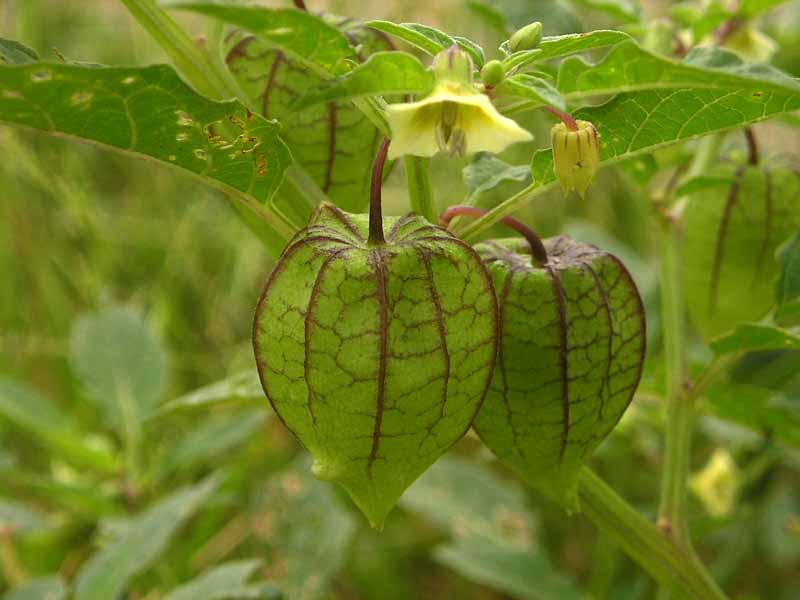
How to grow Chinese Lanterns: Direct sow in garden in prepared soil in June or just barely cover indoors in peat pellets in March/April. Germinates in 14-30 days at 71-75F/22-24C. You can also try growing this like tomato, from transplanted germinated with warmth. Transplant to 18-24" apart. Grow in dappled sunlight/light woodland shade. It gets 24-30"/60-75cm tall. More lanterns are produced when the plant is not crowded, has rich soil, and gets sufficient sun, but full sun is usually too much for it. This plant spreads by underground runners that you can divide in the spring. Chinese lanterns can be aggressive, so grow it in a container if you don't want it taking over your garden, or you can surround it with grassy areas. However, this same invasiveness makes it a good groundcover. Slugs enjoy the young plants, so watch out for them. This plant is a perennial in zones 3-10 (-40F/-40C)
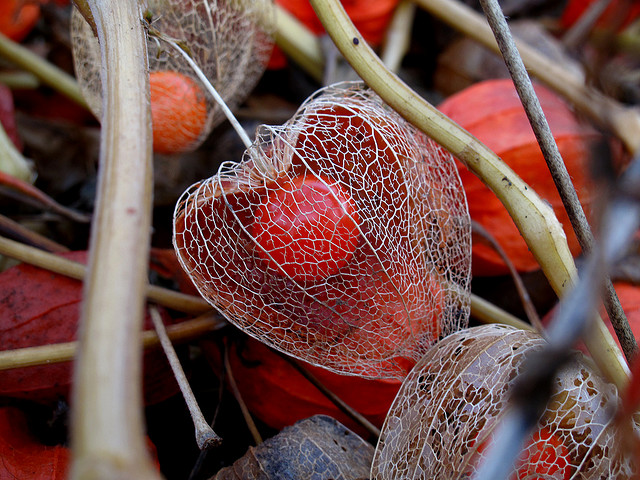
Closely related to the tomato, this purplish fruit is a common feature in many Mexican meals and salsas. Not until cooked does their aroma fully enfold
The sweetly scented berries of this plant are considered a delicacy
Growing instructions
Sow early spring indoors. Pot up the seedlings into individual pots as soon as the first true leaf appears and plant them out after the last expected frosts.
The sweetly scented berries of this plant are considered a delicacy
Growing instructions
Sow early spring indoors. Pot up the seedlings into individual pots as soon as the first true leaf appears and plant them out after the last expected frosts.
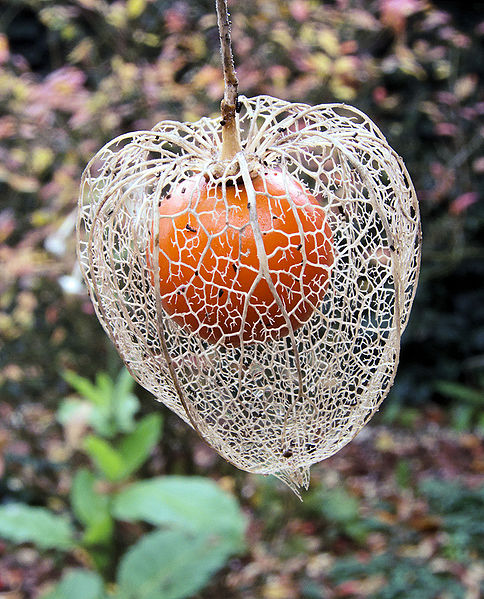
گیاهی است علفی و به ارتفاع 20 تا 60 سانتی متر که به حالت خودرو در زمینهای آهکی مزارع و بوستانها می روید دارای ساقه راست و زاویه دار به رنگ مایل به قرمز و برگهائی متناوب بادمبرگ دراز، بیضوی ، نوک تیز نامنظم و به رنگ سبز تیره دارد. گلهای آن که در فاصله ماههای خرداد، شهریور ظاهر می شود. معمولاً دارای وضع منفرد بر روی ساقه است و در راس دمگلی کوتاه و خمیده ظاهر می گردد. مادگی گلهای آن شامل تخمدانی ، بیضوی بی کرک و دو خانه می باشد و پس از رسیدن به میوه ای به صورت سته، به رنگ قرمز به بزرگی یک گیلاس و محصور در پرده ای قرمز رنگ تبدیل می گردد. این پرده که از بهم پیوستن و رشد کاسه گل بوجود می آید ظاهر زیبا به گیاه می بخشد. در داخل میوه این گیاه نیز دانه های متعدد کوچک، مسطح به رنگ مایل به سفید جای دارد. زمان گلدهی
فاصله ماههای خرداد تا شهریور تکثیر گیاه
پرورش عروسک پشت پرده بدین طریق است که دانه گیاه را ابتدا در قشری از خاک مرطوب و مناسب می کارند و پس از آنکه گیاه جوان حاصل شد آنرا به محل اصلی انتقال می دهند زمین های دارای آهک نسبتاً کافی برای پرورش آن مناسبند.
فاصله ماههای خرداد تا شهریور تکثیر گیاه
پرورش عروسک پشت پرده بدین طریق است که دانه گیاه را ابتدا در قشری از خاک مرطوب و مناسب می کارند و پس از آنکه گیاه جوان حاصل شد آنرا به محل اصلی انتقال می دهند زمین های دارای آهک نسبتاً کافی برای پرورش آن مناسبند.
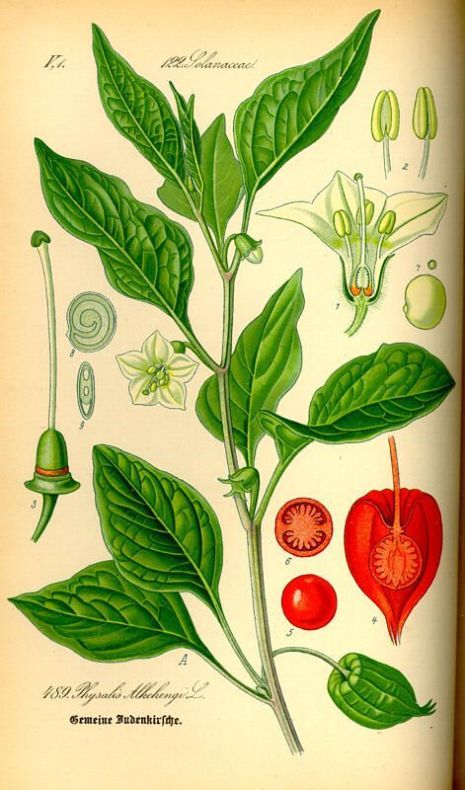
Overview
Physalis, also known as physalis angulata, physalis capsicifolia, mullaca, cape gooseberry and winter cherry, is an herb used in many diverse areas of the world. According to an online article published in the "Tropical Plant Database," physalis has been used medicinally in Colombia, Brazil, Peru, Taiwan, the West Indies and Jamaica, among other places across the globe. Though physalis is a flowering herbal plant, it is primarily the sap, stems, leaves, fruit and roots that are used for medicinal purposes. Physalis is purportedly used around the world for its anti-bacterial, anti-viral, anti-cancer and immune-modulator properties. It is considered safe to consume, but more controlled medical research is necessary to fully establish the efficacy and safety of physalis.Tribal Uses
According to the "Tropical Plant Database," tribal uses for physalis in remote, wooded areas and rainforest areas is especially significant in Colombia, Brazil, Peru, the West Indies and Jamaica, where modern medical care is generally limited and not accessible. However, physalis is reportedly commonly used in these regions as a sort of panacea to treat asthma, malaria, as a pain reliever, to treat earaches, liver problems such as hepatitis, rheumatism, gonorrhea, fever, infertility, to prevent miscarriages, and to help heal post-partum infections. Tribal medicine is often based on trial and error, word of mouth and legend, rather than scientific medical facts, as is the case with modern medicine found in other parts of the world. It is important to consult a physician before taking physalis to prevent allergic reactions or any interference with other medications.Modern Uses
Modern uses vary from country to country, including Taiwan using physalis to treat cancer, urinary insufficiency, fever, and liver diseases such as hepatitis, and Japan, which uses physalis to treat fever, colds, strep throat, swelling and urinary insufficiency. However, physalis use in the U.S. is limited by the fact that there is inadequate human research to prove the efficacy and safety of the herb, though animal studies reportedly indicate it is safe for human use. Few American controlled studies have been performed on this seemingly versatile herbal remedy.Potential
Due to the overwhelming global use of physalis for a multitude of ailments, the medicinal potential for physalis appears to loom large. The few animal studies done as of 2010 have shown no toxic effects from physalis. However, until more medical research is done on this valuable herb, its potential may go unrealized in Western modern medicine.Contraindications
It is important to note that preliminary studies reportedly show that the active ingredients in physalis are powerful flavonoids and alkaloids. Physalis may cause bleeding and should not be taken by people on blood thinners and hemophiliacs. Also, physalis may interfere with certain medications such as cardiac medications, especially those that lower blood pressure.The physalis fruit is also known as the cape gooseberry, goldenberry or ground cherry. It is native to South America, but has been introduced to Hawaii and Australia and can be grown in California. The physalis berry is surrounded by a golden husk called a calyx, and the actual ripe fruit usually resembles a small tomato. Physalis is an excellent source of dietary fiber and vitamin C, according to Specialty Produce. Despite its exotic appearance, physalis is very easy to eat
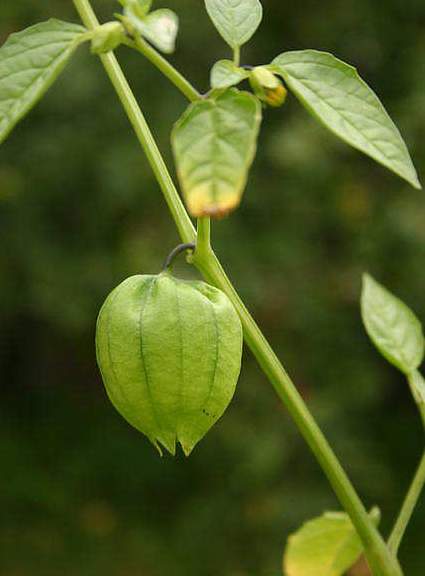
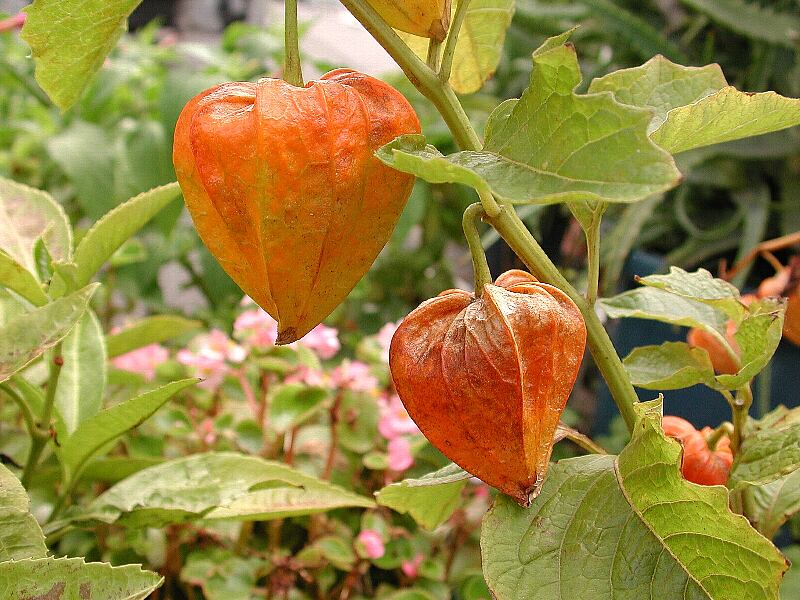
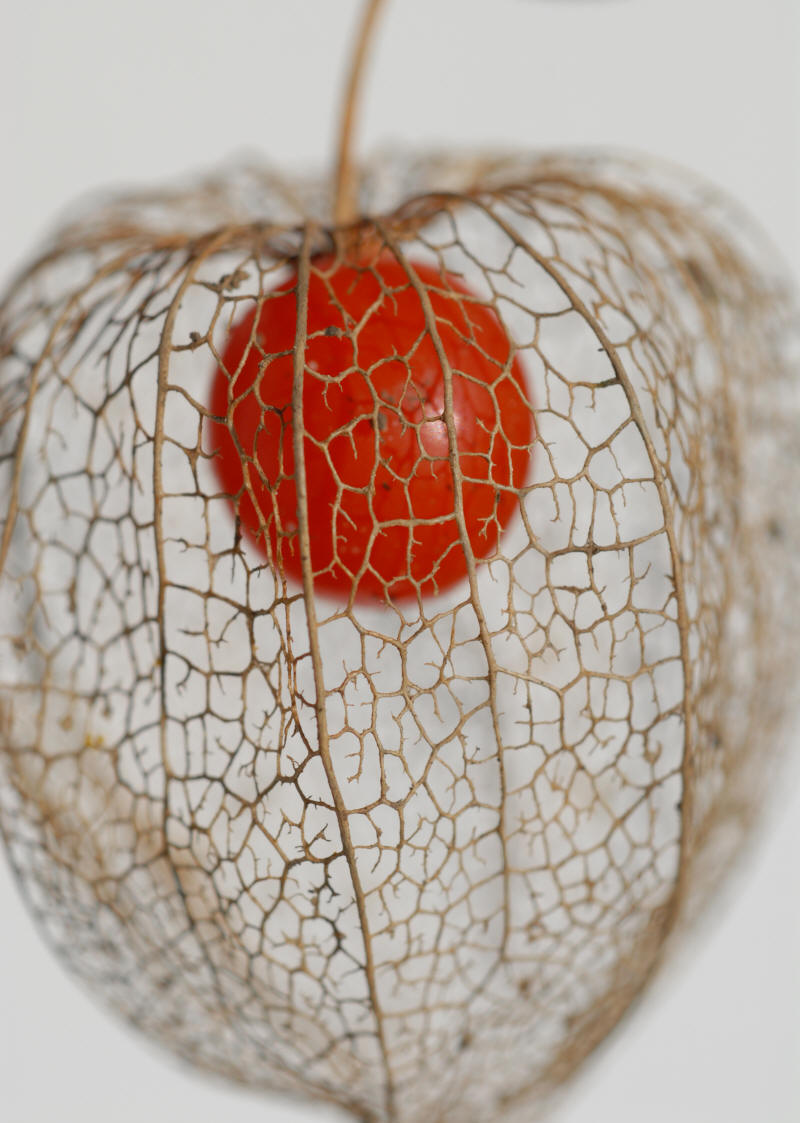
3 comments:
سلام
بسیار از دیدن مطالب شما شاد و دلگرم شدم .واقعا زحمت زیادی کشیده اید .متشکرم که من را با وبلاگ خودتان اشنا کردید .
ضمنا یک سوال شما بچه شهریار نیستند ؟
Beautiful plant with so many uses!
دیواطیفی
Post a Comment